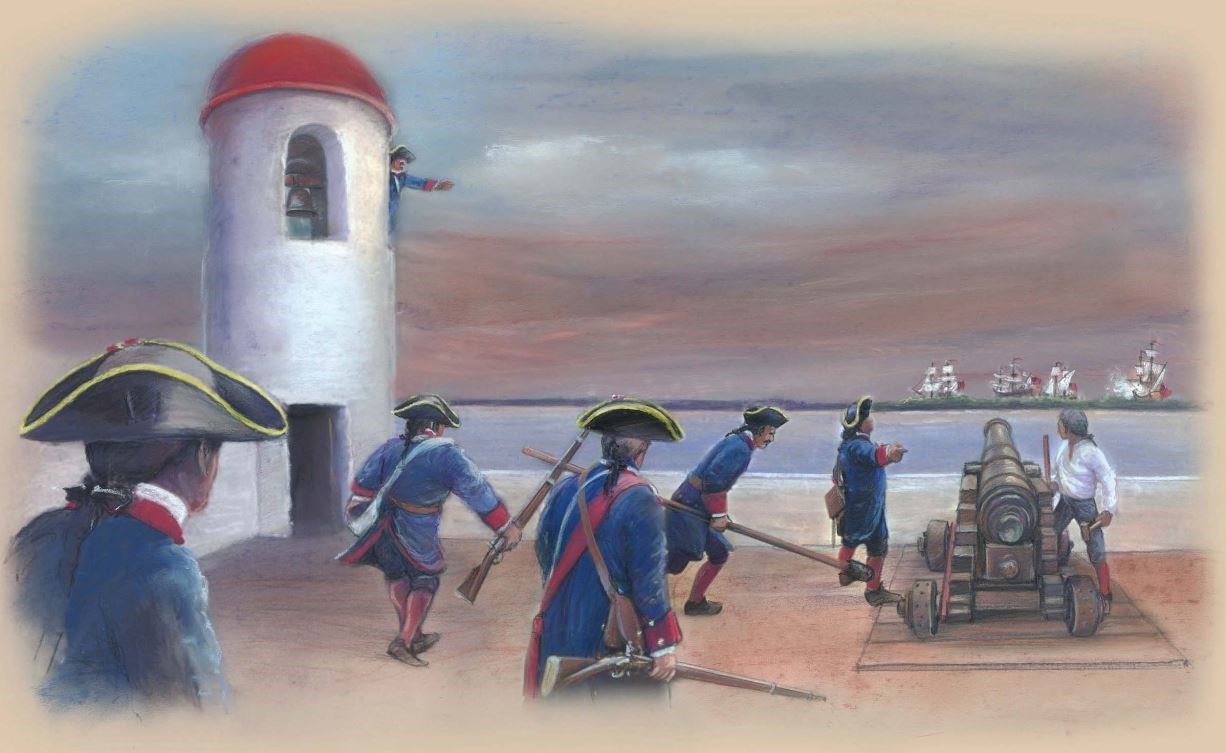
NPS What would life be like in Spanish St. Augustine, a fairly bustling military town of approximately 1,700 during mid eighteenth century? What would be the experience of its residents?St. Augustine was a military garrison more than a traditional colony. Joining the army, the routines of drill, patrol, firearms and artillery practice would be familiar for residents. The age of the soldiers ranged from the teens through eighties. Due to the fact that a soldier was paid irregularly, many of them would have kept a second job in town doing any number of things; including various trades beneficial to the colony; such as, farming, leatherwork, blacksmithing, barrel making, and shoe repair. These colonists would have known hunger and hardship but also some success in life. Some of these soldiers were also land owners. As primarily a military community, part of the garrison’s duties was to patrol the bays and inlets of Florida’s coast, looking for pirates and saving shipwreck survivors from the beaches. The troops of St. Augustine were also utilized at sea as boarding parties and marine guards on local vessels that were called upon to aid in search and rescue efforts, to attack British shipping, or even to attack pirates. Many soldiers of St. Augustine were also cross-trained in both artillery and infantry tactics so they could serve in whatever capacity was needed. Over time, these St. Augustinians became known as Floridanos, i.e., a colonial born in La Florida. St. Augustine was the only home some of these people had ever known! Several generations of families lived in this colony. The officers of the colony were a different story. Typically, officers would have been peninsulares, or Spaniards born in Spain. They were as high on the social ladder as one could get and occupied a level that typically was impossible for anyone not born in Spain. However, due to St. Augustine's remote location and necessity, these military regulations were often relaxed. On rare occasion, local-born colonials, due to achievements or connections, could rise in status through an appointment as an officer. The soldiers of St. Augustine served critical roles in this Spanish military town. We know what these men did, but who were they? Where did they come from? These men would at least be nominal Catholics and would know the saints and a few basic prayers and responses of the Catholic rituals in Latin. Some of the enlisted men were undoubtedly non-Spanish, as there are records of all manner of Europeans living in colonial St. Augustine, including Germans and “English Catholics,” the Spanish phrase for the Irish. It is important to remember that by the mid- 1700s, the Spanish had been in St. Augustine for almost 200 years, so most of the soldiers would have been mestizos, mixed blood ancestry, mostly a mix of Spanish, American Indian, and African, but other Europeans were also known here. This small bustling military town was the first true European melting pot of cultures in the Americas. This colony was largely responsible for the security of the Spanish shipping that sailed along Florida’s coast. To ensure this, the garrison watched not only the Presidio of St. Augustine itself but also built and guarded other outposts along the coast, including Fort Matanzas, Fort Mosé, and another guard post across the western Florida panhandle to Apalachee (present day Tallahassee). The Spanish soldier watched over a vast network of offensive and defensive operations against any enemy encroaching on Spanish claims in La Florida. Local men in St. Augustine’s garrison were part of what Spain called Overseas Troops. They were responsible for the coastal defense of Florida from the Keys to Georgia’s St. Mary’s River, which would be accomplished by patrolling the coastal waters in long, shallow draft boats armed with small swivel guns and maybe even small cannon. Some of the town’s residents came by way of being recued by these patrols and chose to never leave. By 1621, the garrison had already saved over 500 people this way. Many of the soldiers were married and had children in the colony. The continued conflicts with the English in Georgia threatened the future and was a major concern. Yet there were opportunities during such times of conflict, especially for privateers and those with connections to the economic and military powerbrokers in town. Parents would likely anticipate their children growing up in a better world than their own. But in the slow-moving world of the eighteenth century, one could also be looking ahead to the future of grandchildren and great-grandchildren as well. Improving the lives of their families was a primary motivating factor for many in the Americas. To most of these people, St. Augustine was home, not some far off distant land. For many, this colony was more than Spanish imperialism or military or political success. The conflicts became personal. When we look at the troops of Spanish St. Augustine, we see a group of extraordinary people who were diverse members of a compact society. They were a multitude of cultures, both colonial-born and Europeans who served in many different capacities. These were people of the Americas who ultimately played a critical role as the backbone of the colony and a symbol of Spanish power. They protected St. Augustine, their home, from foreign encroachment through two major sieges and many other conflicts. |
Last updated: July 16, 2020
